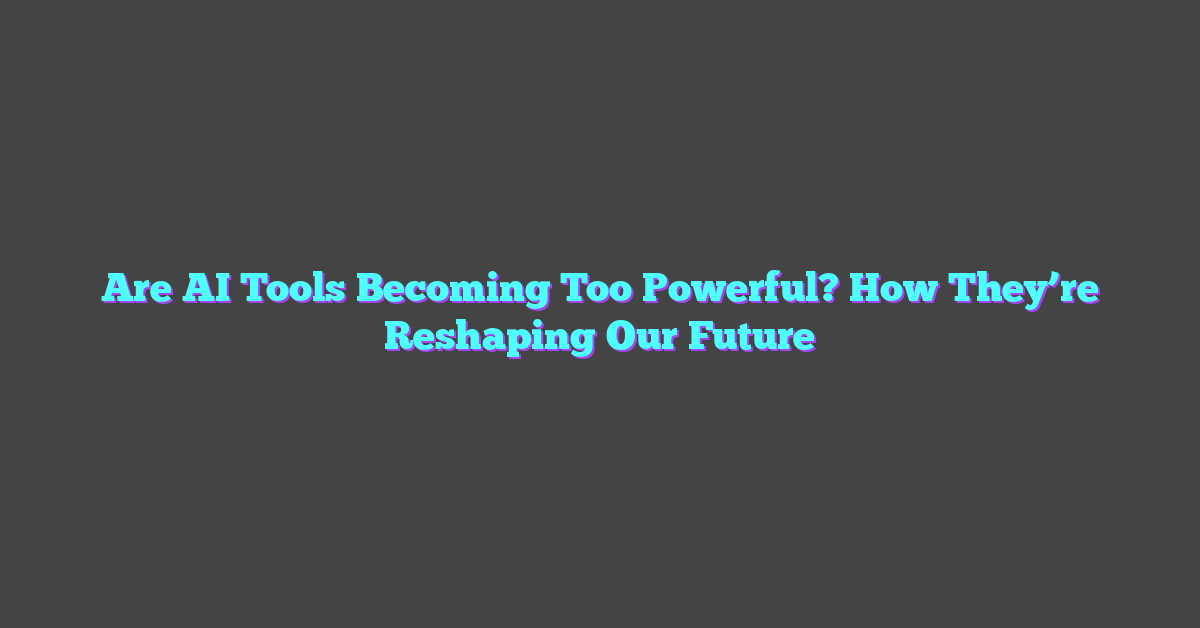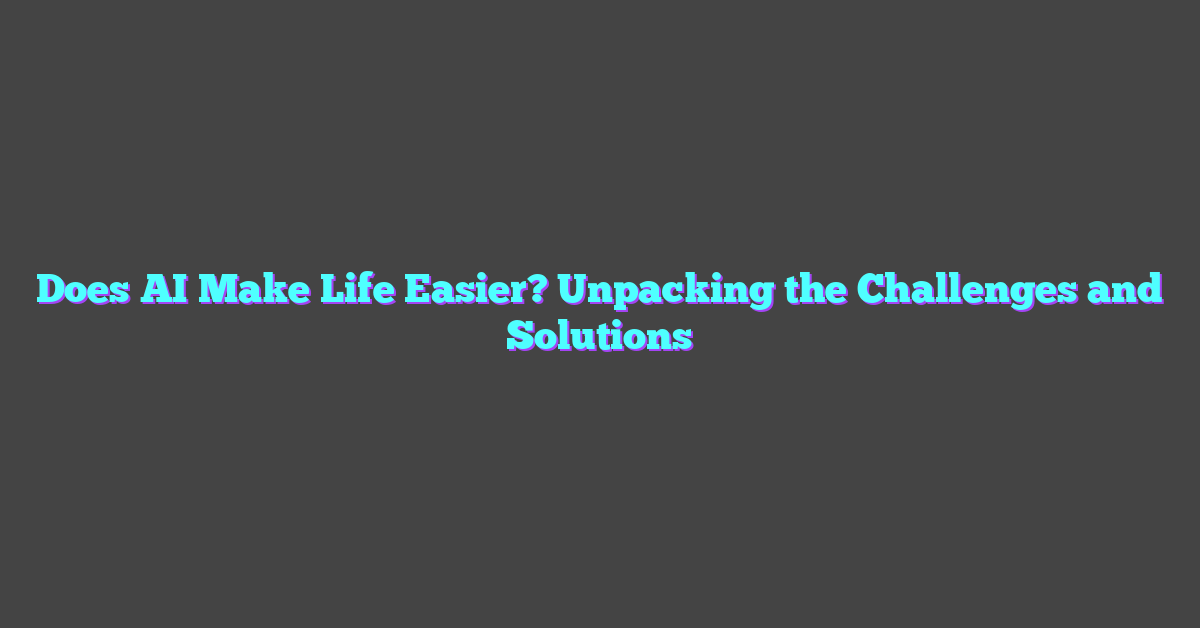Imagine having a personal assistant that never sleeps, always learns, and adapts to your needs. AI robots for adults are no longer a futuristic dream; they’re a reality reshaping how we live and work. These intelligent companions can manage schedules, provide companionship, and even help with household chores, making life smoother and more efficient.
As technology advances, AI robots are becoming more intuitive and user-friendly, seamlessly integrating into daily routines. They’re not just gadgets; they’re becoming indispensable partners in our busy lives. Whether you’re tech-savvy or a novice, these robots offer something for everyone, making the future of AI an exciting journey to embark on.
The Rise of AI Robots for Adults
AI robots for adults have become a game-changer, enhancing daily tasks and improving overall quality of life. These intelligent systems, rooted in advanced machine learning, are reshaping various aspects of our lives.

Benefits in Everyday Life
AI robots provide a range of benefits, significantly impacting daily routines. They offer invaluable assistance with managing schedules, ensuring that adults can keep up with their busy lives. By handling household chores such as cleaning, organizing, and even cooking, these robots free up precious time for leisure and personal pursuits. Additionally, AI robots offer companionship, which can help reduce loneliness for many individuals.
Technological Features and Advances
AI robots present a multitude of innovative features. Voice recognition capabilities allow users to interact with ease, making these robots highly user-friendly. Machine learning algorithms enable these robots to learn preferences and establish personalized interactions. Advanced sensors and navigation systems ensure that the robots can move around efficiently, avoiding obstacles and performing tasks seamlessly.
AI robots for adults are also equipped with connectivity features, integrating with other smart home devices to create a cohesive and automated living environment. Continuous advancements in AI and robotics technology guarantee that these intelligent companions will only become more sophisticated and indispensable over time.
Key Players in the AI Robot Market
In the rapidly evolving arena of AI robots for adults, several key players stand out. These entities drive innovation, shape the market, and contribute to the continuous improvement of AI robotics.
Leading Companies and Innovators
Several companies lead the market with cutting-edge technology and innovation.
- SoftBank Robotics: Known for its humanoid robot Pepper, SoftBank Robotics integrates advanced AI to offer interactive and intuitive user experiences. Pepper assists in customer service and hospitality using natural language processing.
- Boston Dynamics: Renowned for its agile robots like Spot, Boston Dynamics leverages sophisticated machine learning algorithms to create robots capable of complex tasks, agility, and adaptability in various environments.
- Hanson Robotics: Innovators behind the humanoid robot Sophia, Hanson Robotics focuses on combining AI with expressive human-like features. Sophia engages in conversations, making her a valuable tool for education and research.
- iRobot: Famous for the Roomba robotic vacuum, iRobot employs machine learning to optimize cleaning routes and improve performance. They continue to expand their product line to include robots for various domestic tasks.
Emerging Startups and Contributions
Emerging startups contribute fresh ideas and technologies, continuously pushing the boundaries of what’s possible in AI robotics.
- Ubtech Robotics: Develops educational and entertainment robots. Their Alpha series provides interactive and programmable robots that help users learn coding and robotics.
- Anki: Innovators of the Cozmo and Vector robots, Anki uses advanced AI and emotional intelligence to create companion robots that interact with users in playful and engaging ways.
- Aido: Created by InGen Dynamic, Aido serves as a modular and versatile home assistant. It integrates smart home functionality with personal interaction capabilities.
- Blue Frog Robotics: Makers of Buddy, a companion robot, Blue Frog Robotics combines social interaction capabilities with practical uses, such as home security and elder care.
Comparative Analysis of Popular Models
Comparing popular AI robots highlights the diversity in functionality and technology.
| Model | Manufacturer | Features | Uses |
|---|---|---|---|
| Pepper | SoftBank Robotics | Natural language processing, social interaction | Customer service, hospitality |
| Spot | Boston Dynamics | Agility, environment adaptability, payload capacity | Industrial inspections, research |
| Sophia | Hanson Robotics | Conversational AI, human-like expressions | Education, research |
| Roomba | iRobot | Autonomous cleaning, path optimization | Domestic cleaning |
| Alpha | Ubtech Robotics | Educational programming, interactive entertainment | Education, entertainment |
| Cozmo | Anki | Emotional intelligence, playful interaction | Companionship, entertainment |
These key players and their innovations showcase the dynamic evolution of AI robots for adults. They continue to redefine how technology integrates into daily life, enhancing convenience and companionship.
Applications of AI Robots in Healthcare
AI robots in healthcare improve patient outcomes, enhance efficiency, and provide critical support.
Assistance in Elder Care
AI robots offer personalized care for the elderly. Robots like Pepper from SoftBank interact with seniors through conversation, reminders, and companionship. In nursing homes, robots monitor health metrics, reducing the burden on caregivers by managing routine check-ups. RoboCare’s caregiver robots even perform mobility assistance tasks, ensuring safe movement and fall prevention.
Mental Health and Wellbeing Support
AI robots address mental health by providing empathetic interactions. For example, Woebot uses natural language processing to offer cognitive-behavioral therapy (CBT) through chat-based interactions. Companies like PARO create therapeutic robots resembling baby seals, which have been used with patients suffering from depression and anxiety. These robots deliver comfort and reduce feelings of isolation by simulating social interaction.
Statistics highlight these impacts:
| Application | Example | Primary Benefit |
|---|---|---|
| Elder Care | Pepper, RoboCare | Personalized interaction, task assistance |
| Mental Health Support | Woebot, PARO | Cognitive-behavioral therapy, social comfort |
AI robots in healthcare represent a substantial advancement in patient care, modernizing traditional methods with intelligent, interactive solutions.
Ethical Considerations and Privacy Concerns
AI robots for adults offer remarkable efficiency and companionship, but several ethical and privacy issues arise with their integration. Addressing these concerns ensures a balanced approach to innovation.
Addressing Data Security
AI robots collect and process vast amounts of personal data. This information includes daily routines, health records, and personal interactions. Companies must implement strong data encryption and secure storage practices to protect this sensitive information. For instance, employing end-to-end encryption and secure cloud storage can prevent unauthorized access.
Moreover, transparency in data usage policies is crucial. Users should receive clear information about what data is collected and how it’s used. Regular security updates are also essential to address vulnerabilities promptly, safeguarding user data from breaches.
Ethical Implications of AI Interaction
AI robots engage in complex human-like interactions. However, this raises ethical questions about dependency and the potential manipulation of user emotions. Developers should design these robots to support human well-being without fostering unhealthy attachments.
Consent and autonomy are paramount. Users must have control over their interactions with AI robots, including the ability to limit or stop data collection. Clear guidelines on interaction boundaries help maintain ethical standards.
The inclusivity of AI designs also matters. Developers need to ensure that AI robots cater to diverse user groups without biases. Using diverse datasets in training models can mitigate discriminatory outcomes, promoting fairness and equality in AI interactions.
Future Trends and Potential Developments
Innovations on the Horizon
AI robots are advancing rapidly across various sectors. In healthcare, AI robots are expected to offer more personalized patient care, leveraging advanced algorithms to predict health issues and recommend treatments. Companion robots are set to become more empathetic, using natural language processing (NLP) and emotional recognition to better understand and respond to human emotions. Security robots will employ enhanced AI capabilities, integrating facial recognition, anomaly detection, and adaptive learning to improve safety measures in public and private spaces.
Potential Market Growth and Consumer Demand
The AI robot market is projected to grow substantially over the next decade. Healthcare and elderly care sectors are anticipated to see the highest demand, spurred by aging populations and the need for efficient care solutions. The companion robot market is also likely to expand, with increasing interest in mental health support and social interaction. Consumer preference for smart home integration will boost demand for household AI robots, capable of assisting with daily tasks and improving home automation systems. Overall, the market trajectory points toward significant innovation and widespread adoption, driven by evolving consumer expectations and technological advancements.
Conclusion
AI robots for adults are transforming lives by offering efficiency and companionship. With innovative contributions from key market players and startups, these robots are becoming indispensable in healthcare, providing personalized patient care and mental health support. Ethical considerations like data security and transparency remain crucial as the technology evolves. The future holds exciting advancements, from empathetic companion robots to enhanced security features. The AI robot market is set for substantial growth, driven by increasing demand in healthcare, elderly care, and smart home integration. As consumer expectations rise, AI robots will continue to innovate and integrate seamlessly into daily life.
Frequently Asked Questions
What are the benefits of AI robots for adults?
AI robots for adults offer improved efficiency, reliable companionship, and seamless integration into daily tasks. They can assist in household chores, provide mental health support, and ensure better patient care.
Which companies are leading in the development of AI robots?
Both established tech giants and emerging startups are key players in the AI robot industry. Companies like Boston Dynamics, SoftBank Robotics, and various innovative startups are at the forefront of developing advanced AI technologies.
How are AI robots used in healthcare?
AI robots in healthcare assist in patient monitoring, medication management, and providing mental health support. They can also help in elderly care by offering companionship and ensuring their safety and well-being.
What are the ethical concerns regarding AI robots?
Ethical concerns include data security, transparency in AI interactions, and the implications of robotic behavior. It is crucial to address these concerns to ensure AI robots act in a manner that is safe and respectful to users’ privacy and ethical standards.
What future developments can we expect in AI robots?
Future trends include personalized patient care through advanced AI, empathetic companion robots using natural language processing and emotional recognition, and security robots with enhanced AI. These advancements aim to provide more intuitive and personalized support.
How significant is the growth of the AI robot market expected to be?
The AI robot market is projected to see substantial growth over the next decade, driven by high demand in healthcare, elderly care, mental health support, and smart home integration. This growth is fueled by ongoing innovation and evolving consumer expectations.




